On my travels I occasionally play somewhere that catches me off guard. Royal North Devon—or Westward Ho! as it is often called—was one such place. I visited the course on a recent trip to England with my wife. She doesn’t play golf, but we walked the course together, ate lunch in the clubhouse, and left saying, “Why aren’t more clubs like this?”
It wasn’t the only the design that gave us that impression, although there were some great sections of the course. It was the entire package from the friendly members and staff, to the great views, a characterful clubhouse, long history, and even animals walking across and grazing on the course. Upon reflection, I think that Westward Ho! embodied many of the things I like most about golf in the UK.
The clubhouse at Royal North Devon isn’t a lavish or fancy building, but it’s one of my favorites I’ve seen in recent years. The walls are packed with wooden panels containing the names of club champions and event winners dating back to the club’s founding in 1864—it’s the oldest course in England. There are hickory-shafted clubs, trophies, books, photo albums, trunks full of memorabilia, and more. For a golf history nut it’s heaven, but the club also has a really relaxed and comfortable atmosphere.
Our experience was the opposite of walking on egg shells and I still talk about it with my wife. The clubhouse has a wall of glass overlooking the putting green and course beyond. We had lunch in the window and couldn’t have enjoyed it more.
The course was designed by Old Tom Morris and it plays across both flat farmland and a section of gorgeous linksland that spans holes 4-10. Those linksland holes border the ocean and a piled-stone sea wall that protects the course from the ever-eroding sea.
Unfortunately, part of the sea defenses was washed away in a 2017 storm, which brought the 7th green perilously close to the beach. Over the 2018 summer UK design firm Mackenzie and Ebert Since designed new 7th and 8th holes that will be built over the next year. The two holes will move further away from the ocean, as seen in the video below.
I hope to get back and see the new holes sooner than later. The oceanside stretch of linksland is my favorite part of the course and I suspect they’ll be able to maintain that area’s charm without a problem.
Hole #1 – 462 yards – “The Burn” – This opening hole is a short par 5. Small creeks protect the left side and another crosses the fairway short of the green. 
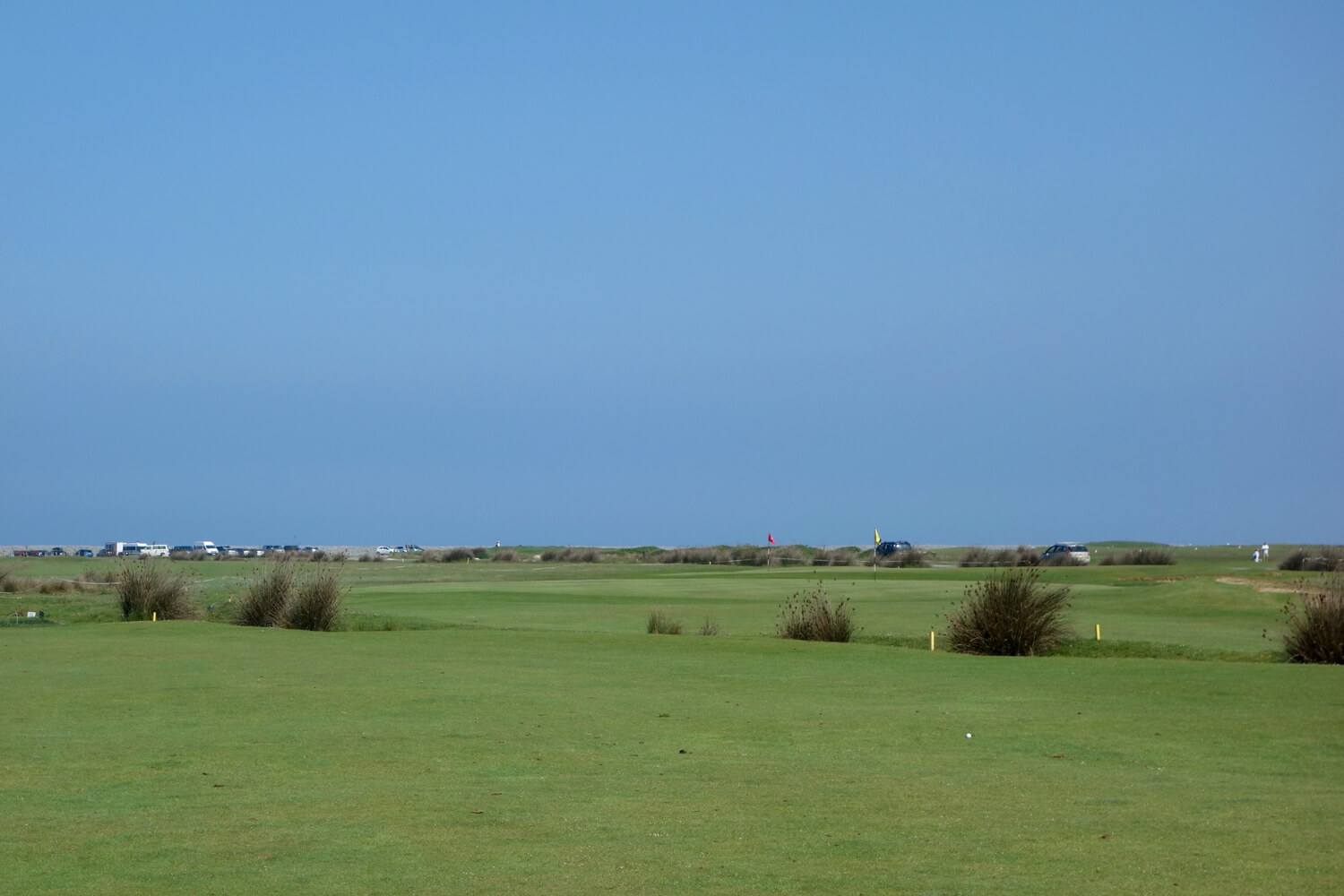
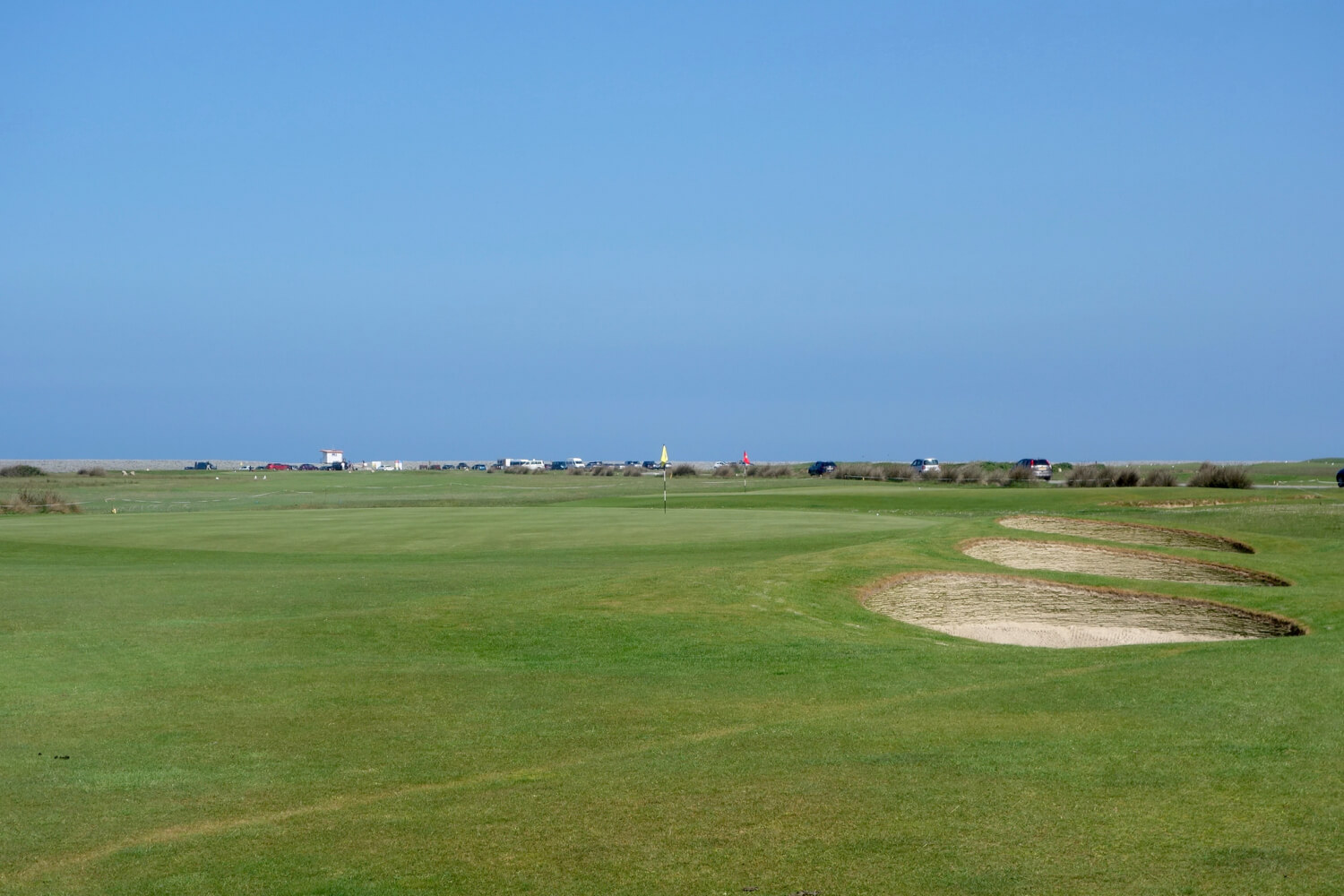
Hole #2 – 412 yards – “Baggy” – This hole plays across flat agricultural land out toward the sea and a small domed green.


Hole #3 – 413 yards – “Crest” – The course starts to pick up on this third hole where deep revetted bunkers force players to think. Anticipation also starts to build on this hole with the huge walled bunker on the 4th hole lingering in the distance.

Hole #4 – 344 yards – “Cape” – I love the “aim here” arrow on the back edge of this walled bunker. It’s an easy carry off this tee, but the bunker does catch low or mishit shots. Once you carry the bunker, it’s downhill run to a sunken green guarded by deep pot bunkers. This hole feels like something you’d find at Scotland’s Prestwick and it starts a stretch of real stunners at Westward Ho!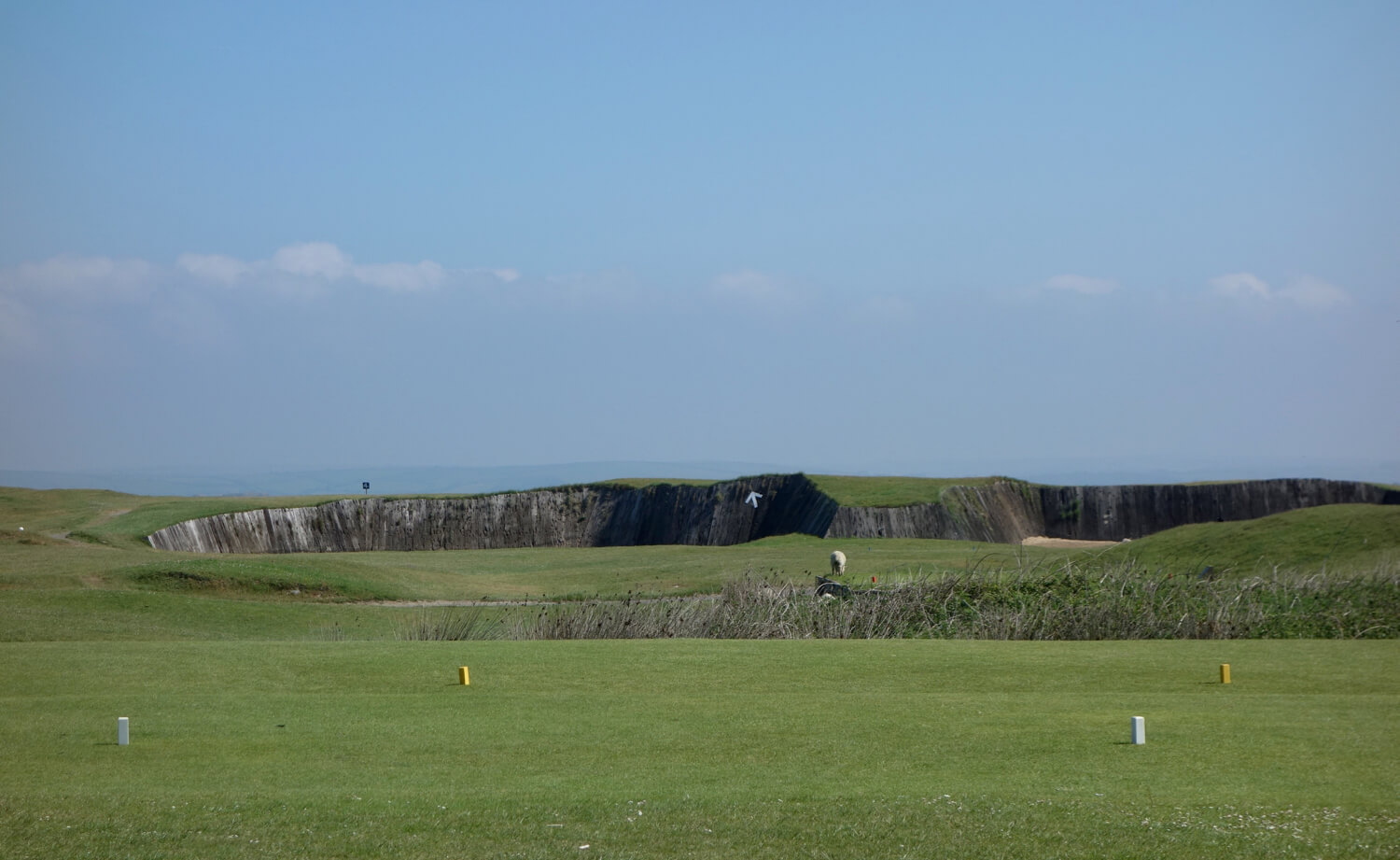
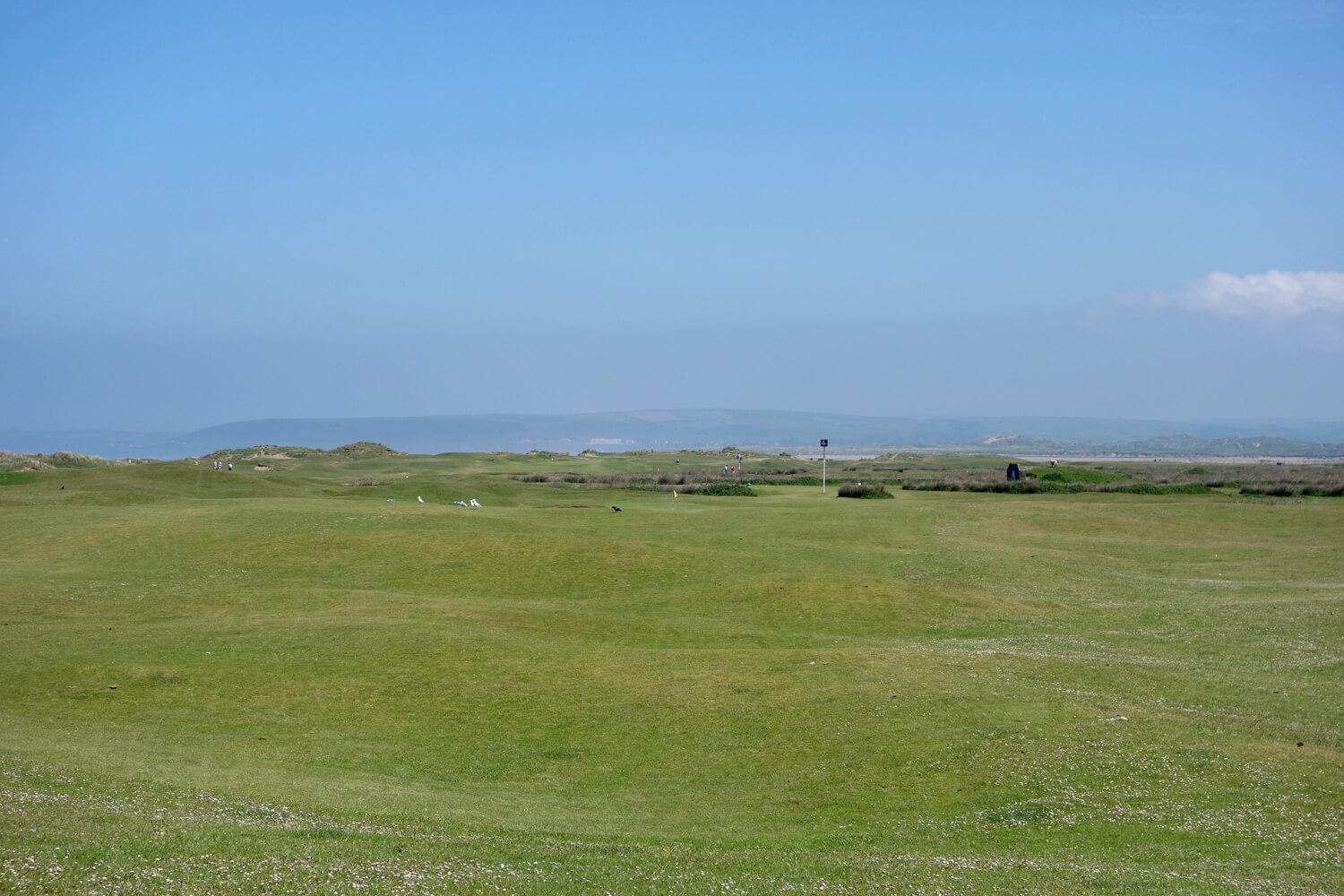

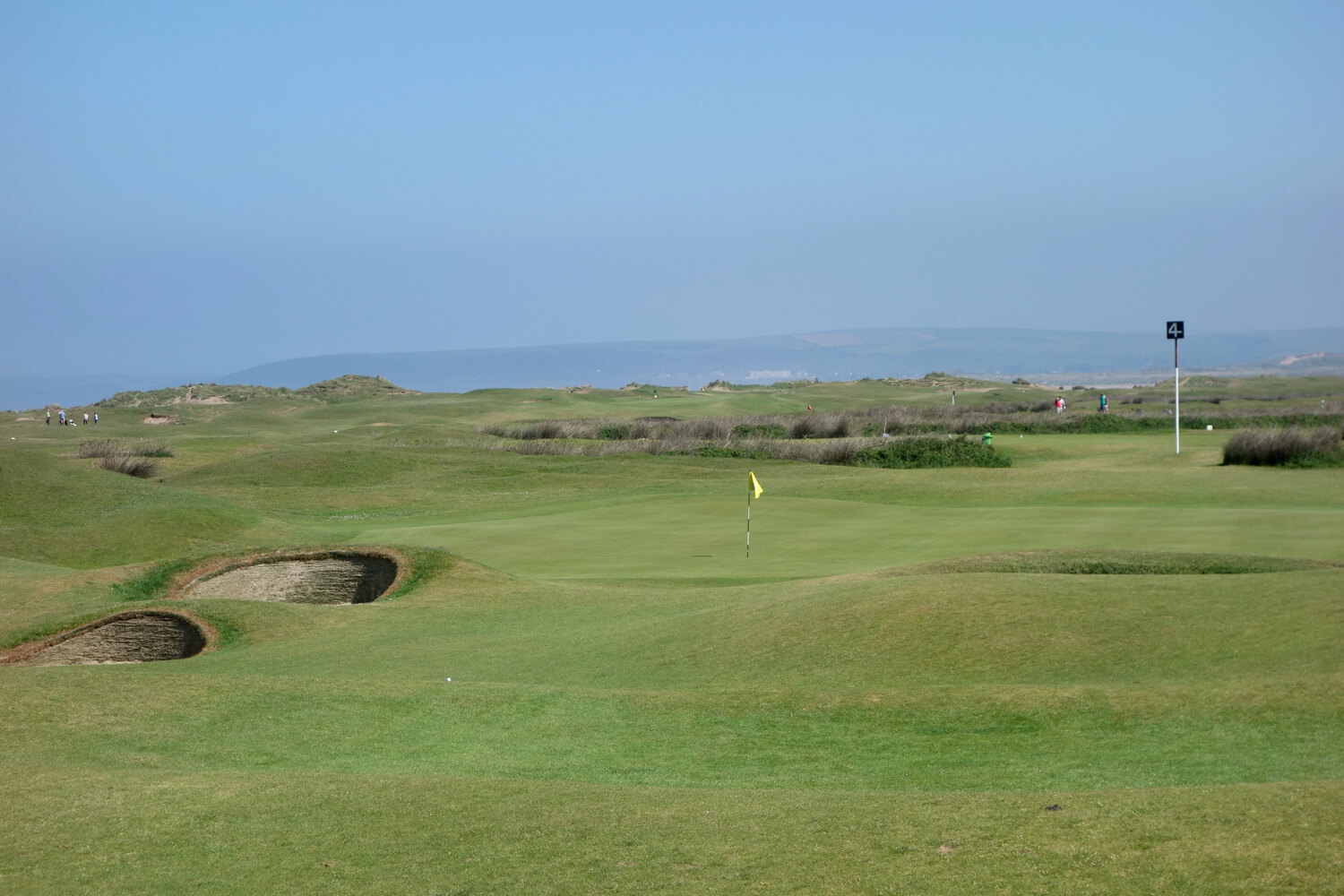
Hole #5 – 136 yards – “Table” – This short par 3 is my favorite hole on the course. Just beyond the green is the sea wall and ocean, with benches for walkers on the sea wall trail. The hole is called “Table” and this raised green really does feel like hitting up onto its namesake. From this green you turn around and can see every hole on the course.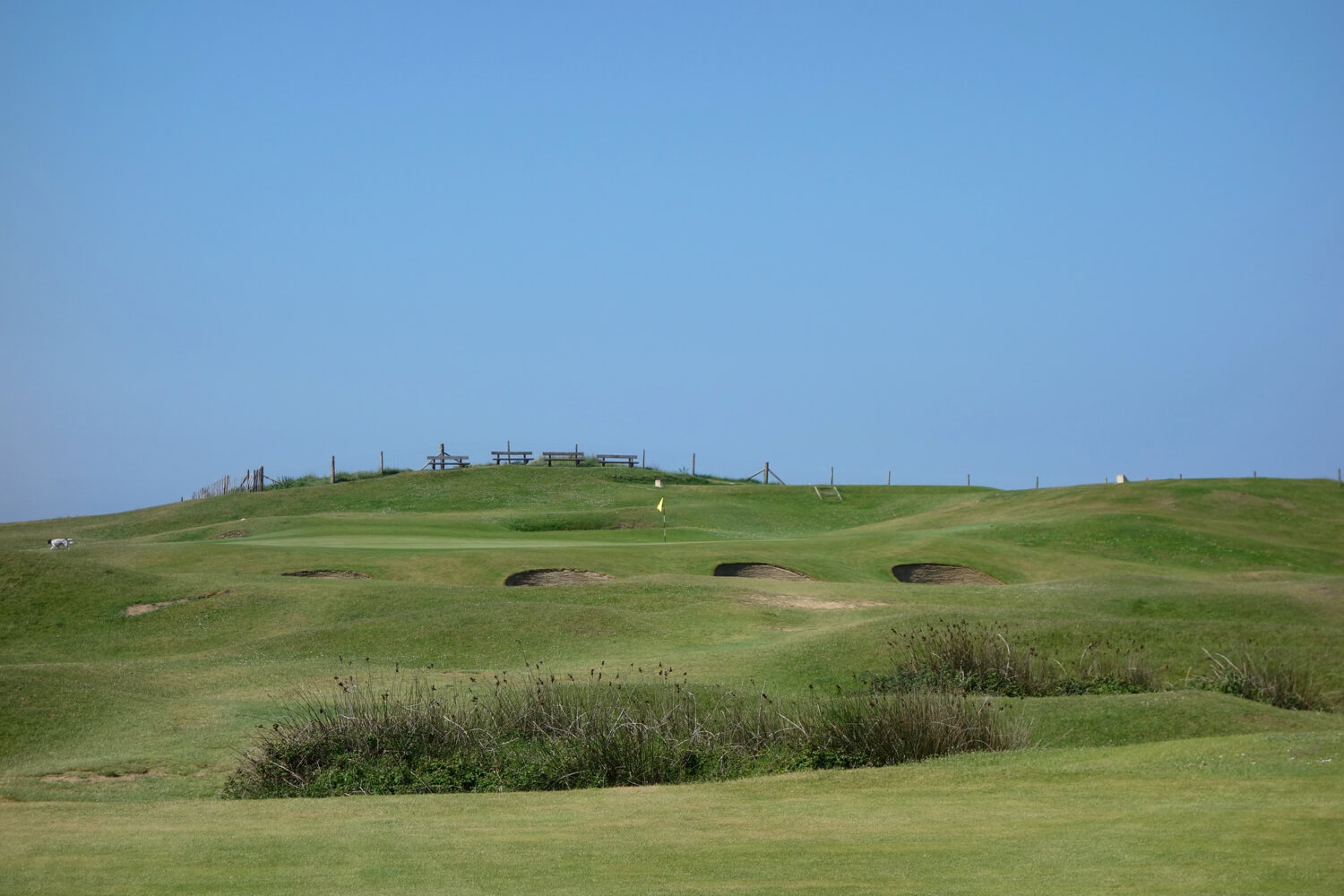
Hole #6 – 396 yards – “Alp” – The view from this highest point on the course is stunning. There is a group on the green in the photo below and a group of bunkers guarding the landing area.
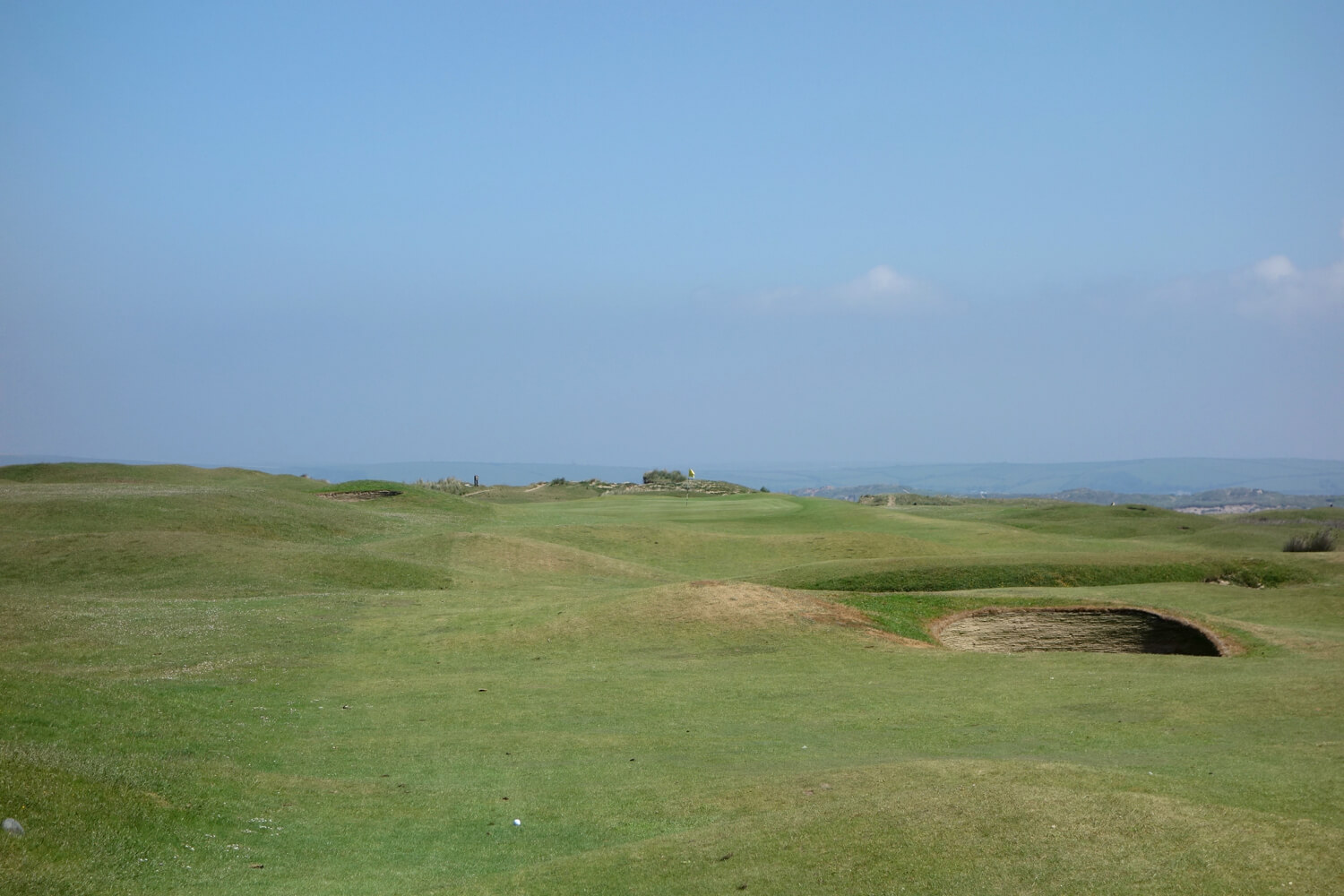
Hole #7 – 383 yards – “Life Boat” – This hole is initially confusing, but the line off the tee is the hut in the distance in the first picture below. From there the hole turns left to a green hidden next to a hill and framed by the beach.
Once this hole is changed the green will move back and to the right, working away from the water instead of toward it.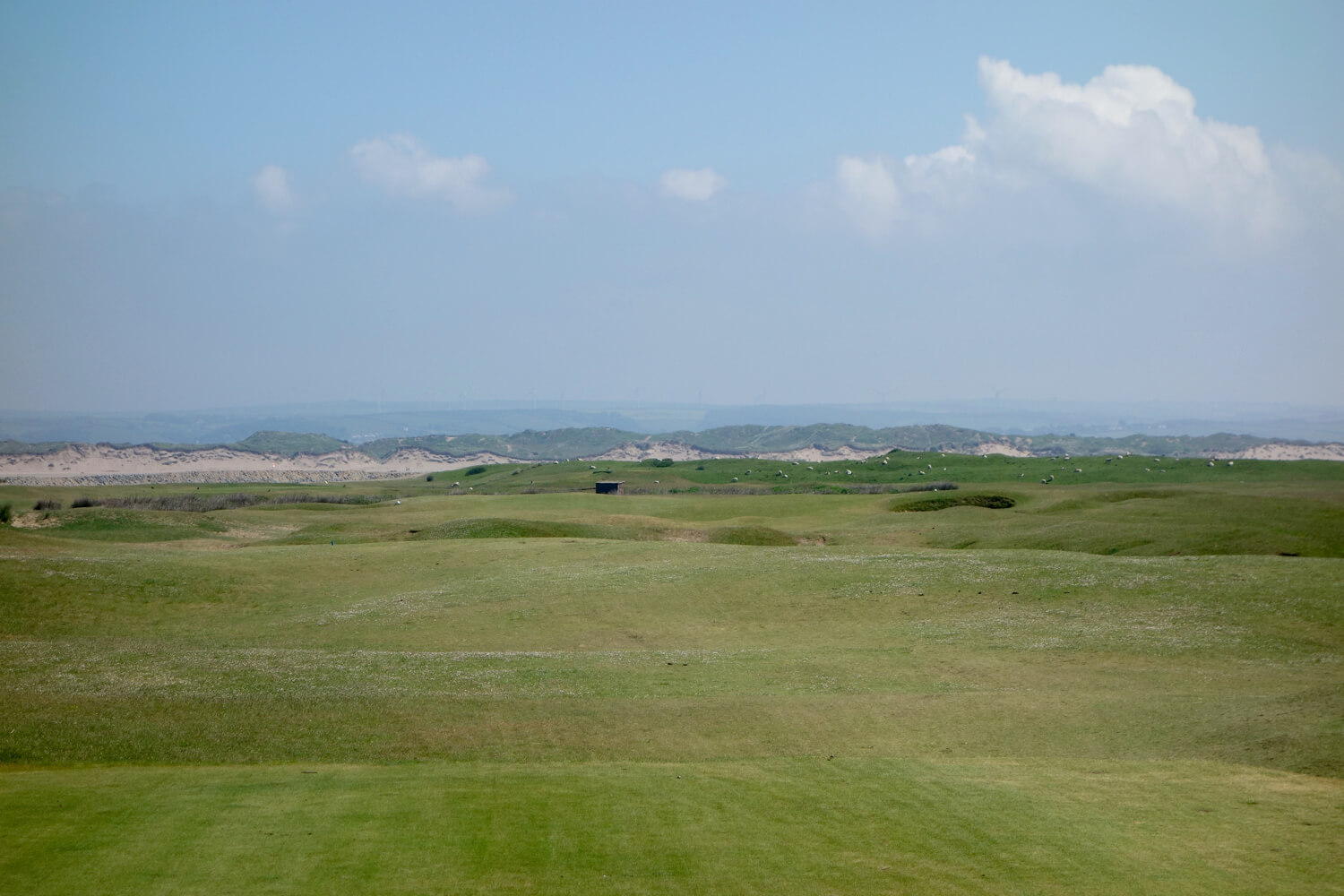

Hole #8 – 182 yards – “Bar” – This par 3 embodies everything I liked about Royal North Devon. Horses and sheep graze around this green, the ocean sits just beyond the sea wall on the left, and a massive system of dunes frames the scene perfectly.
This hole will change in the near future and the direction of play will turn inland (check out the video in the introduction).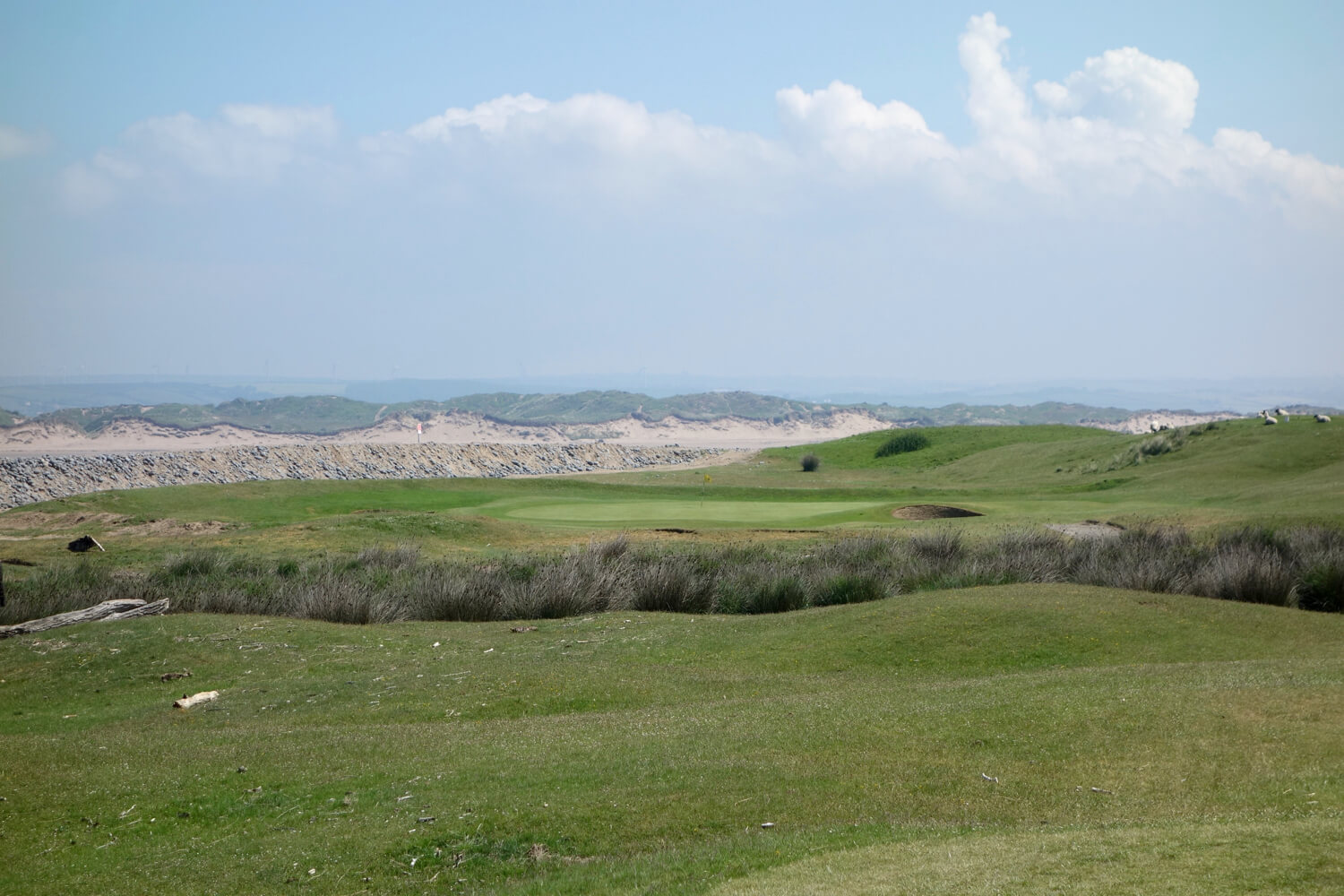
Hole #9 – 467 yards – “Dell” – The final hole on the front nine plays away from the ocean and back into the flatter section of the course. Signs with various hole numbers pop above the landscape here to mark greens on the flat landscape.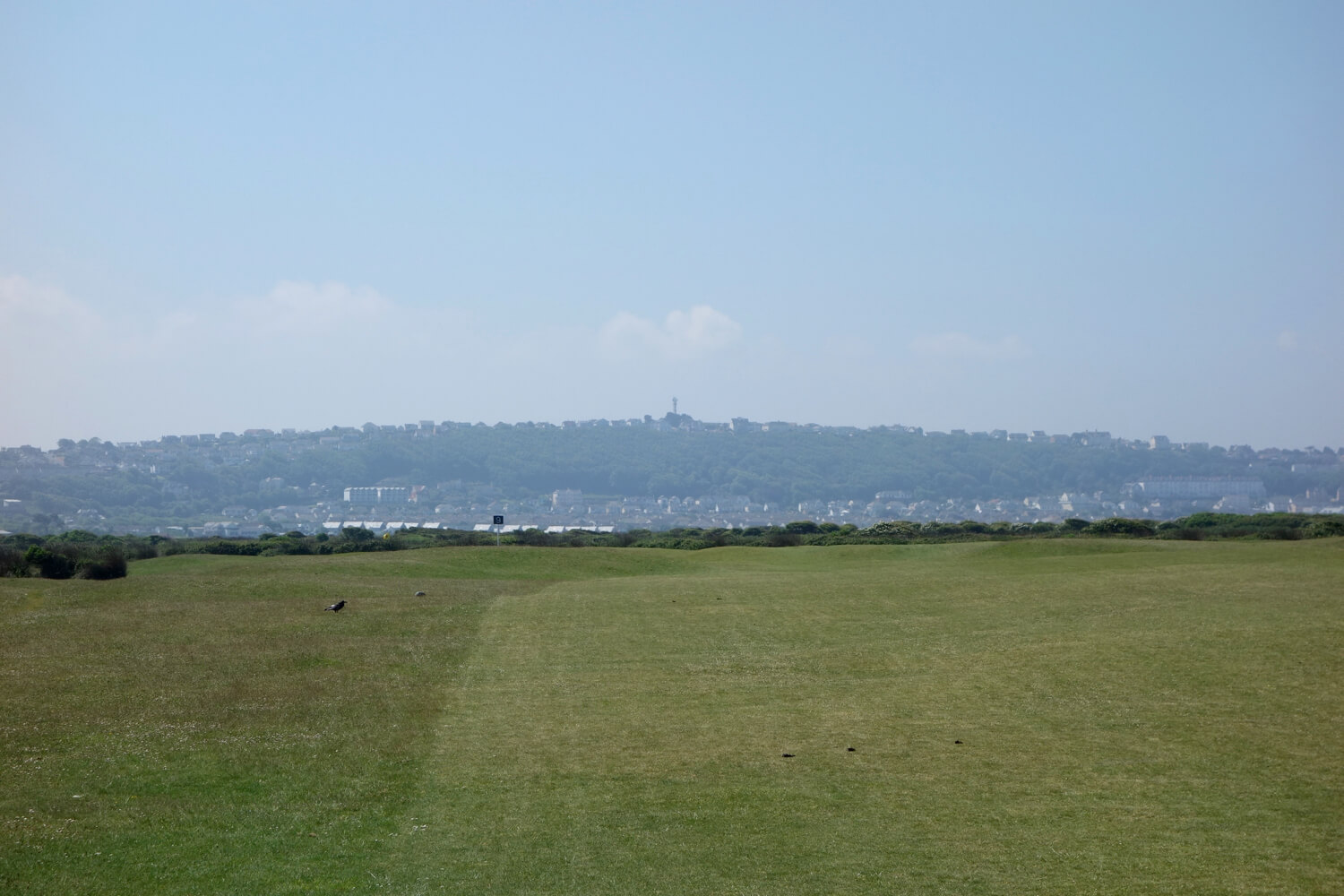
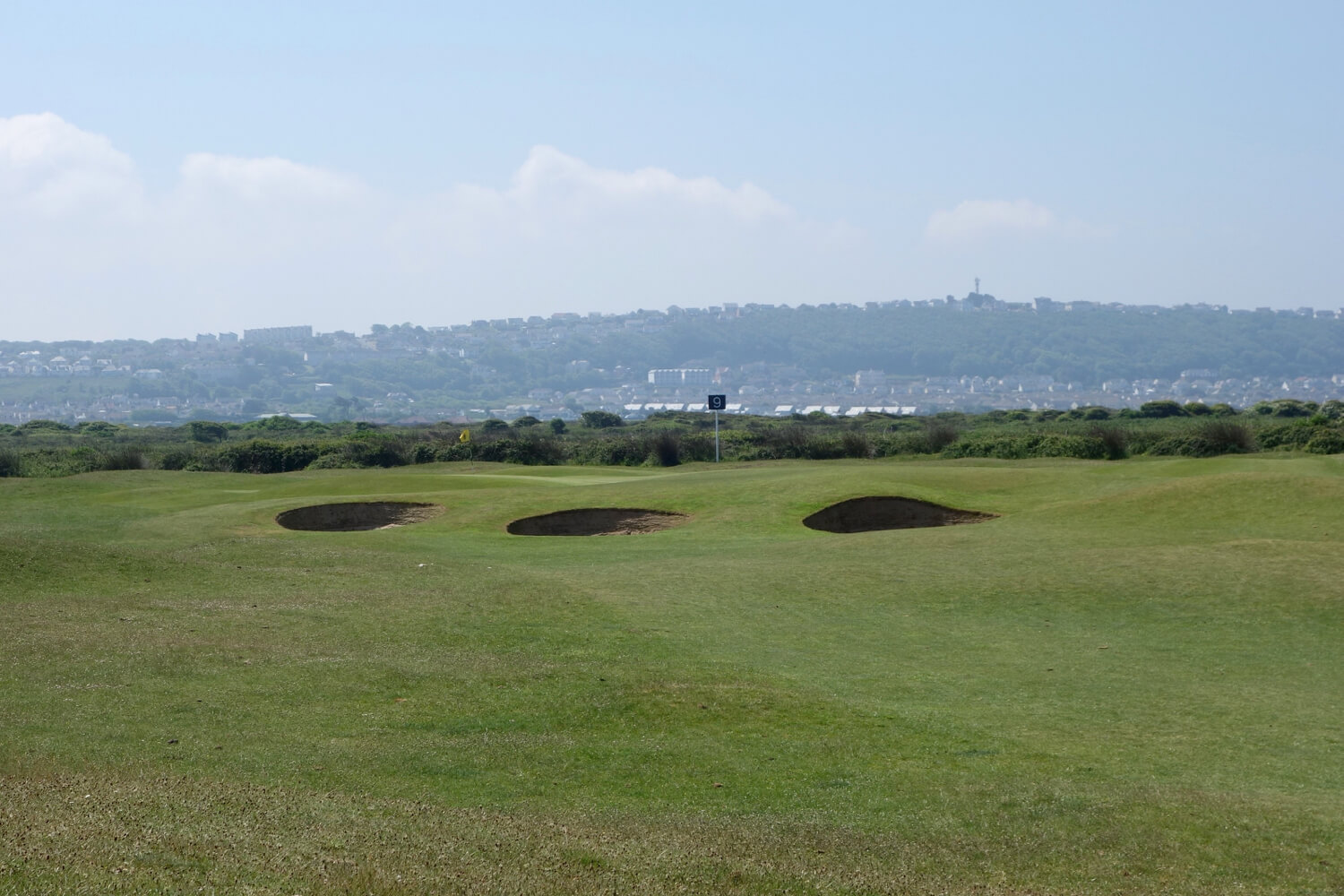
Hole #10 – 349 yards – “Rush” – This dogleft left plays around a scrubby area to a green guarded by a deep front bunker.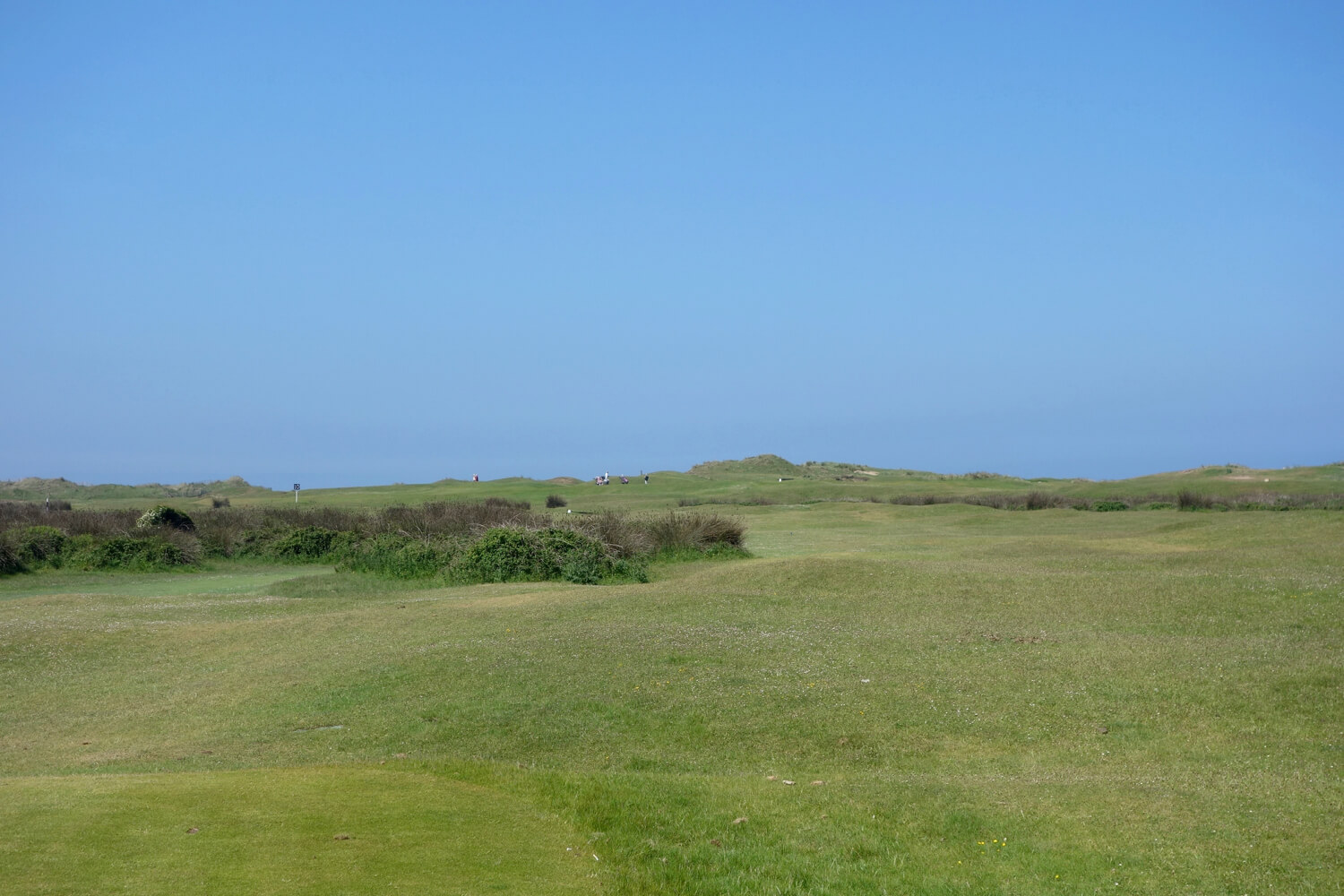

Hole #11 – 363 yards – “Appledore” – This blind tee shot isn’t kind to first time visitors, but as they say, “A blind shot is only blind once.” I erred a little too far left, lost my ball, and next time will aim down the right. That angle on the right also opens up the approach shot to the green.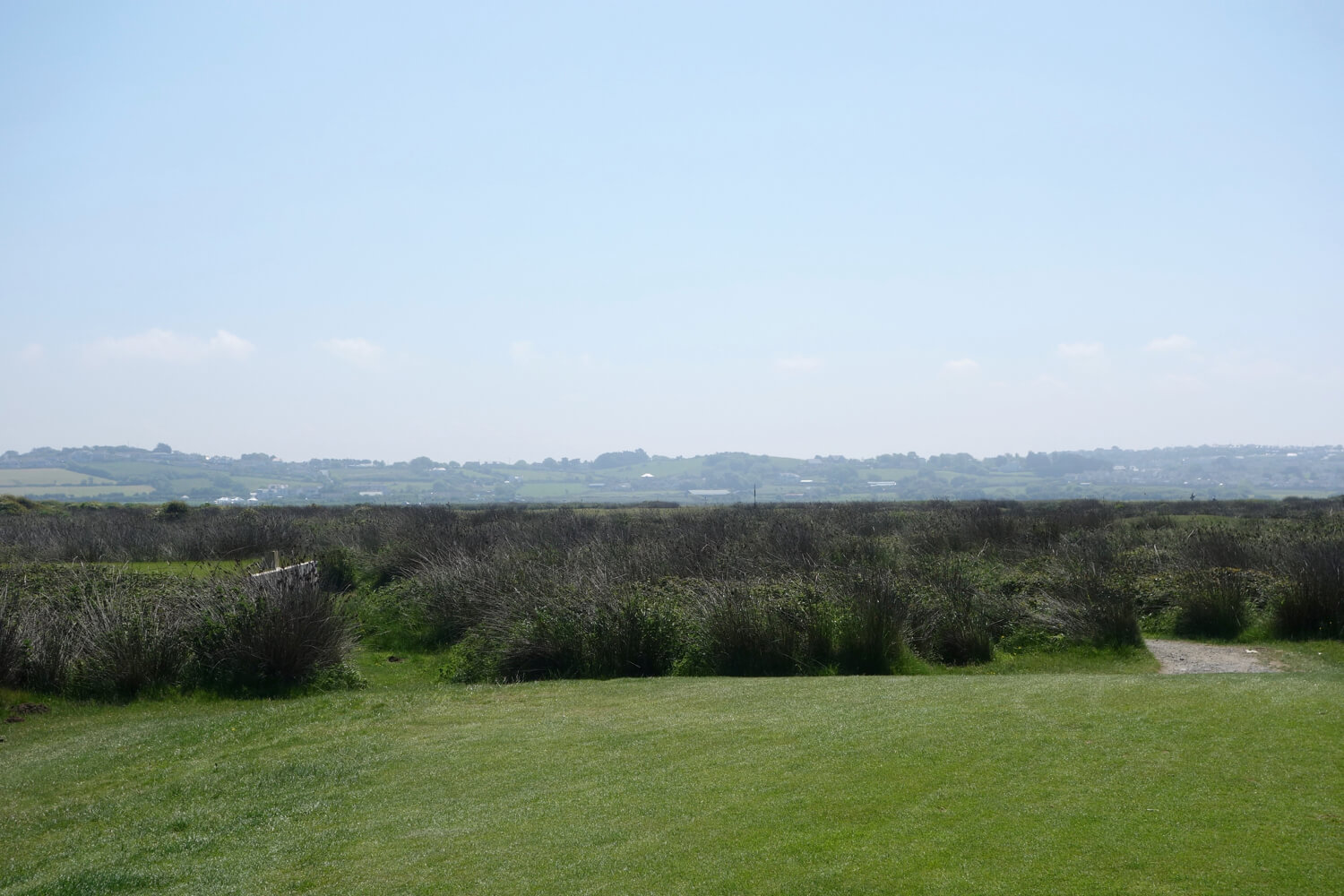
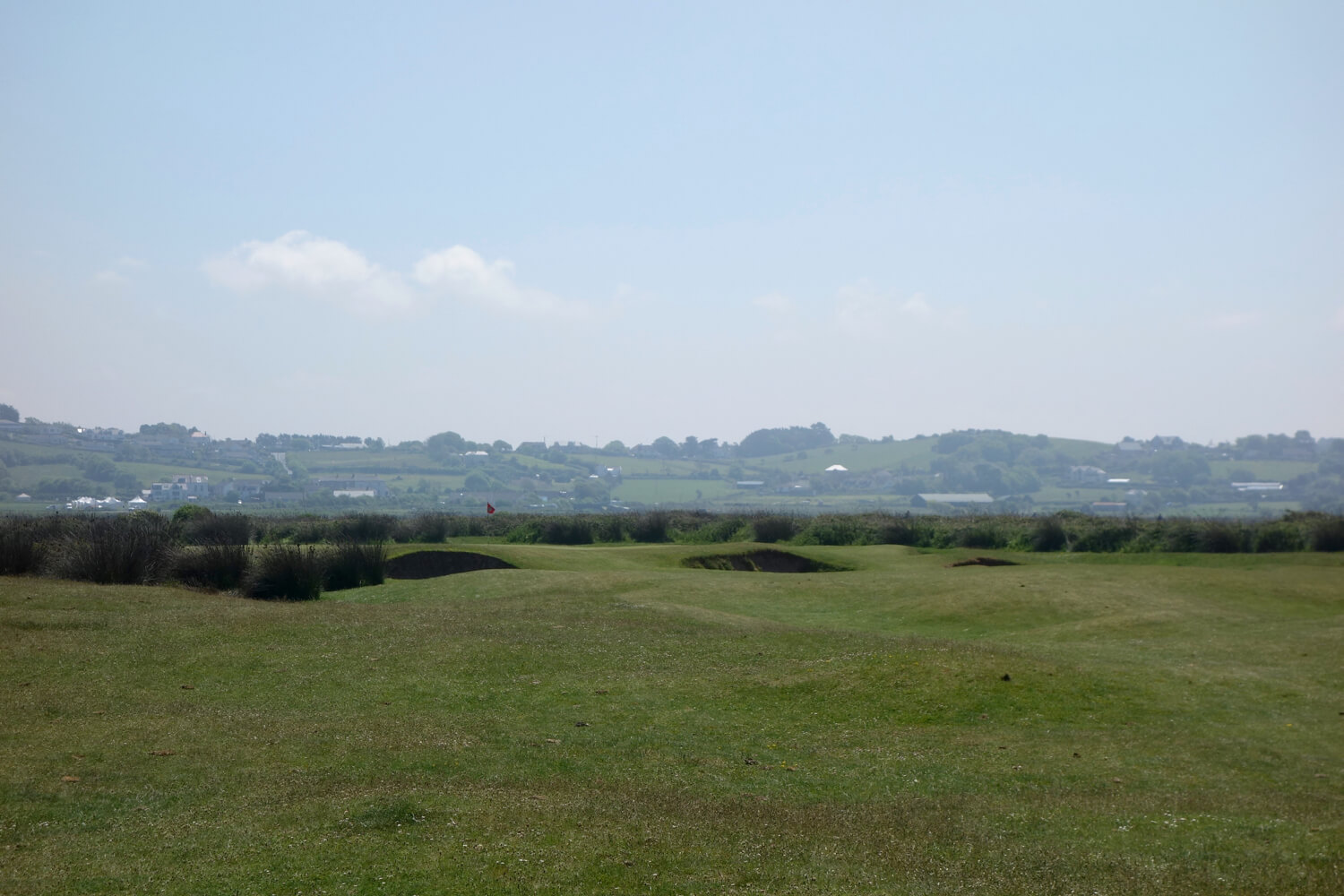
Hole #13 – 421 yards – “Lundy” – This short par 5 plays straightaway toward the ocean and a slightly raised green guarded by pot bunkers.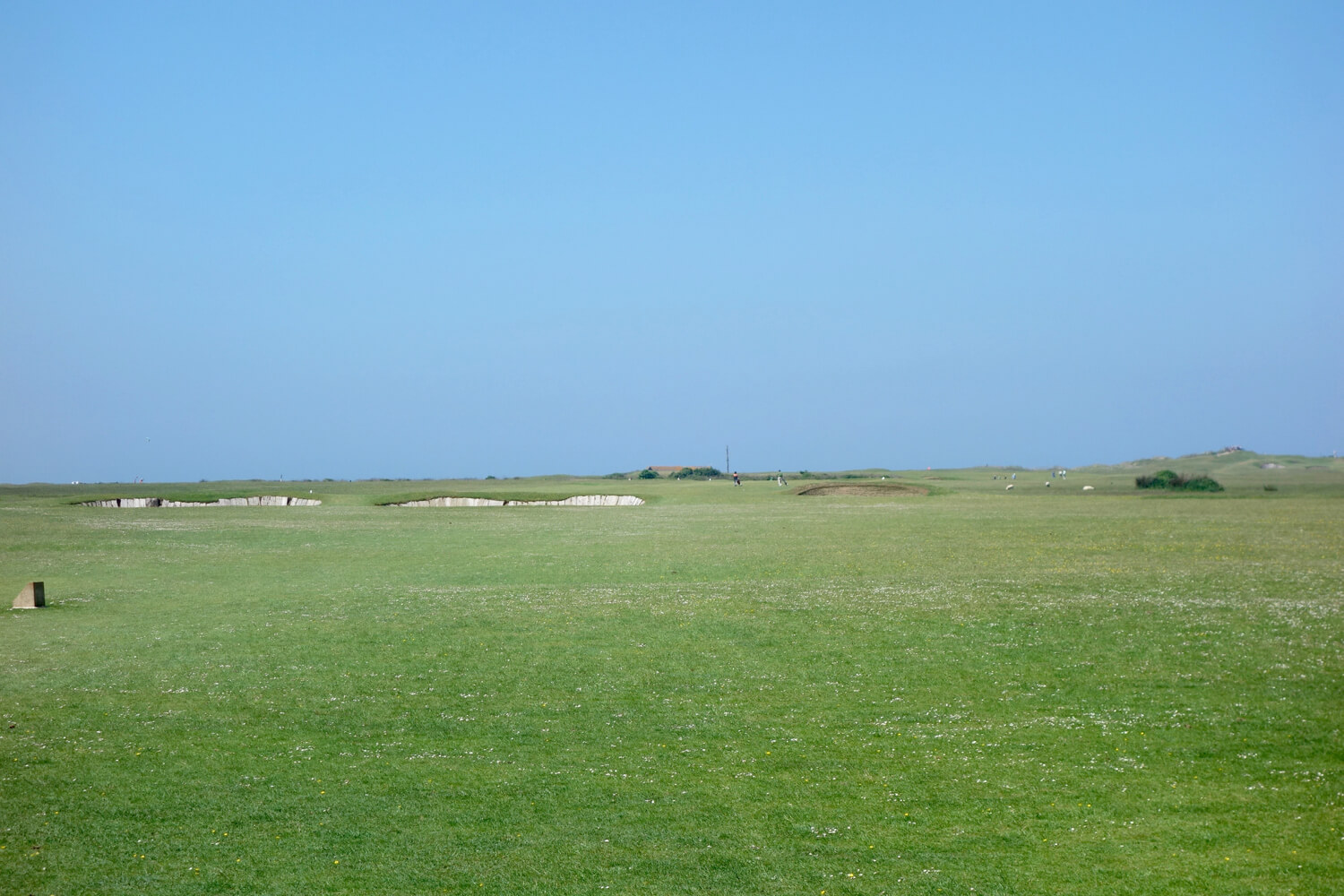
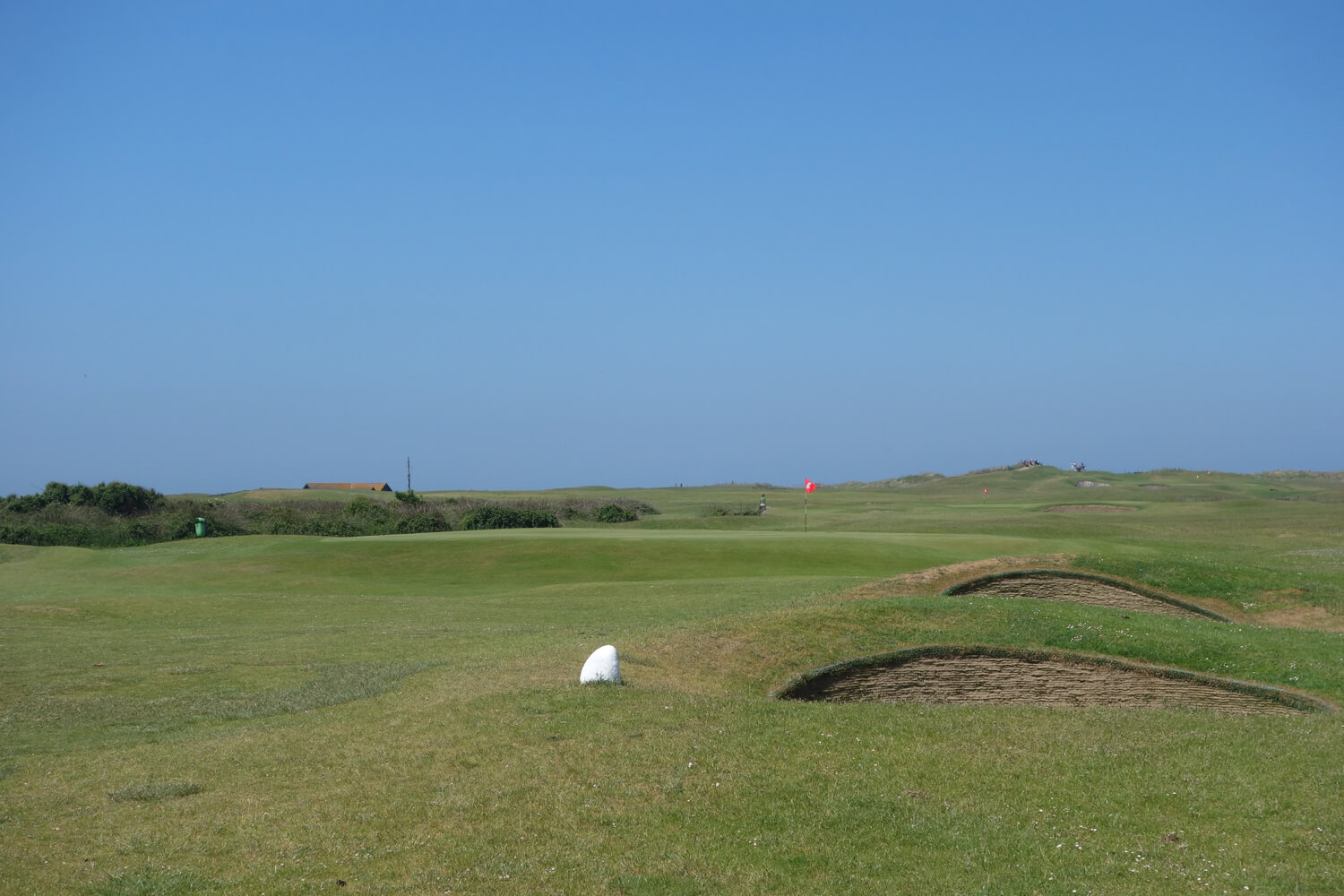
Hole #14 – 177 yards – “Iron Hut” – Another hole you want to see more than once, this par 3 has deep bunkers guarding both sides of the green.
Hole #15 – 408 yards – “Church” – This dogleg right bends around a scrubby area to a green just below the “15” sign in the distance. The town of Westward Ho! is seen beyond and to the right of this green.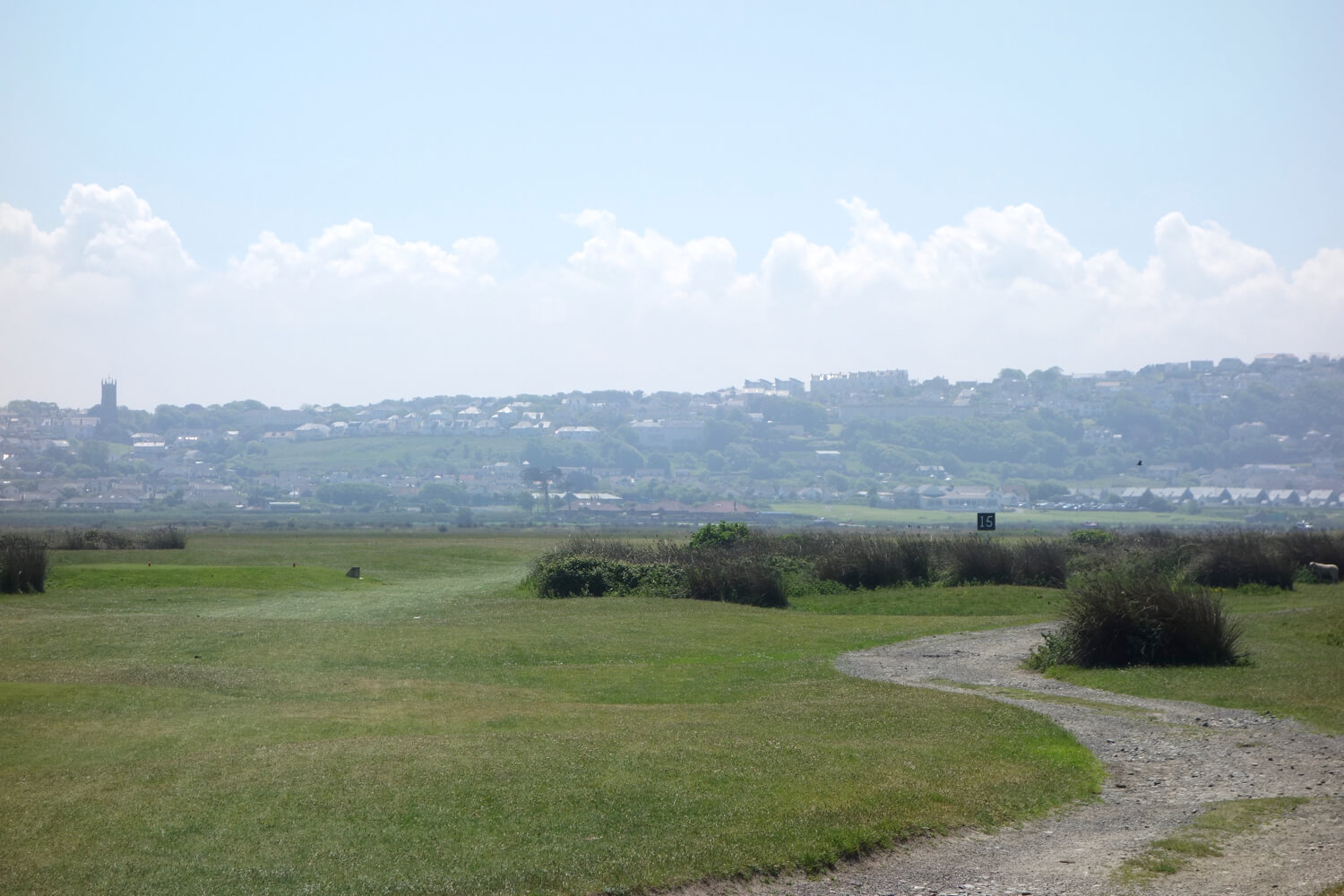
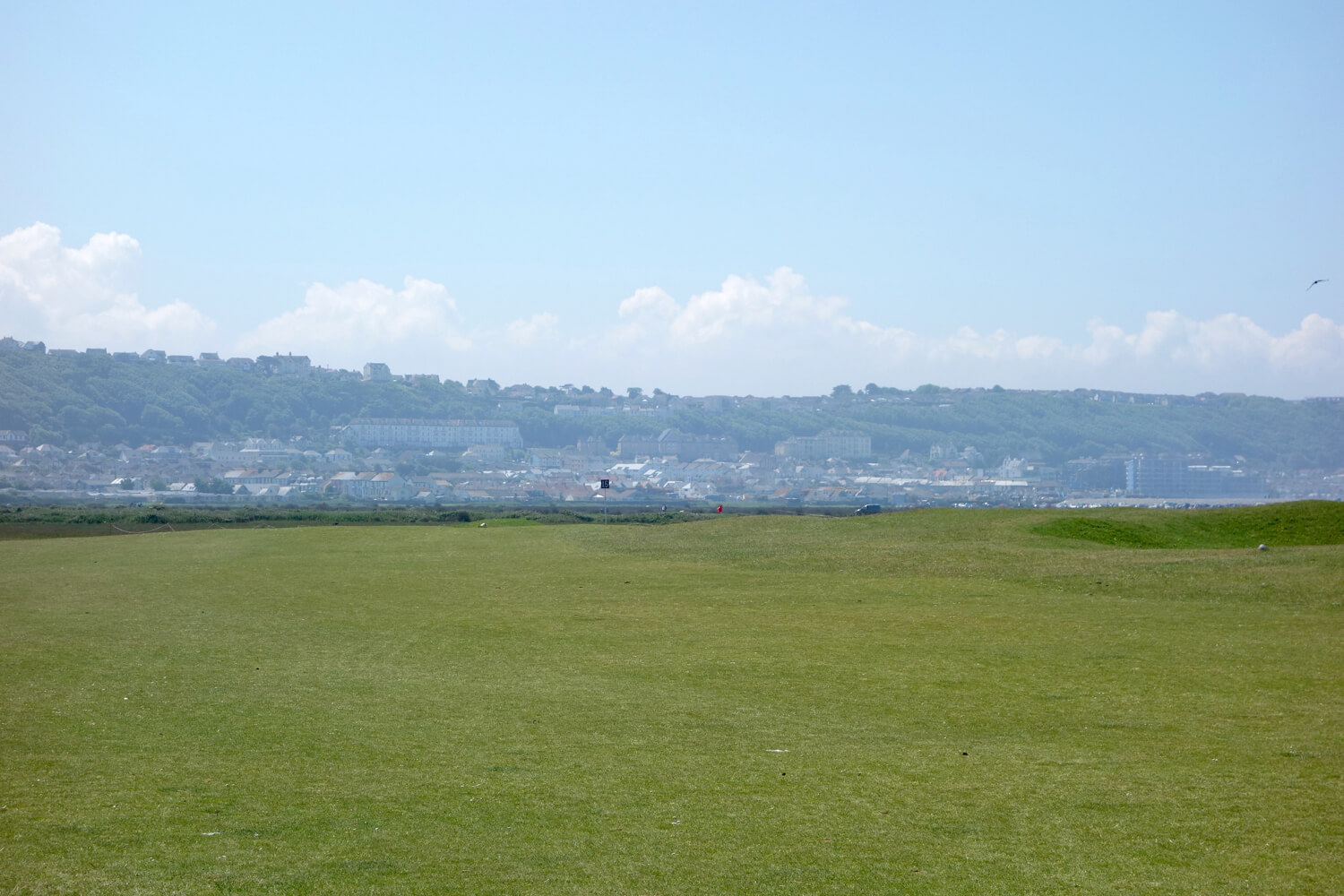

Hole #16 – 141 yards – “Punch Bowl” – Another par 3 you’d like to see twice because of the flat landscape, this one has a single deep bunker front right which captured my ball and makes for a hard par.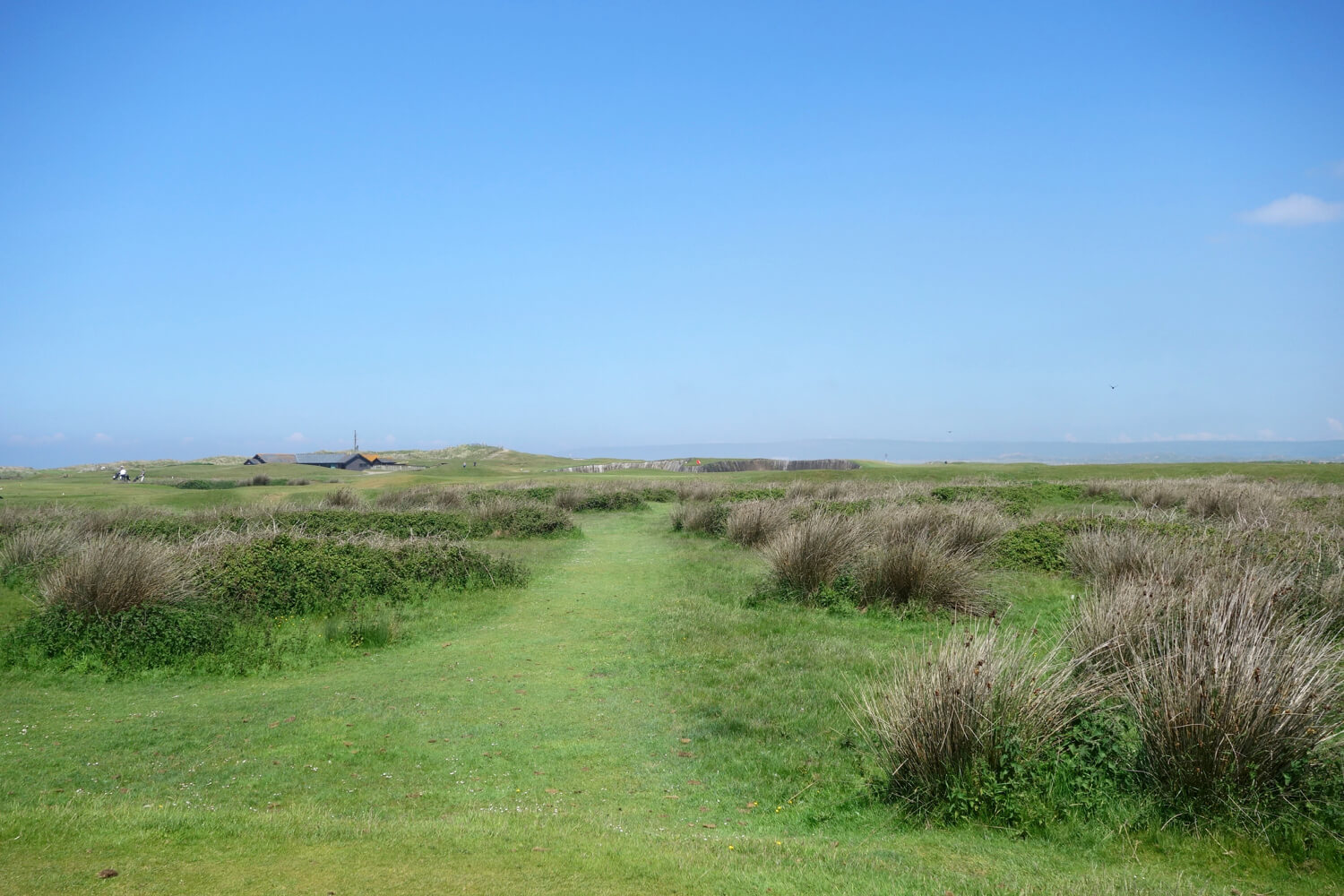
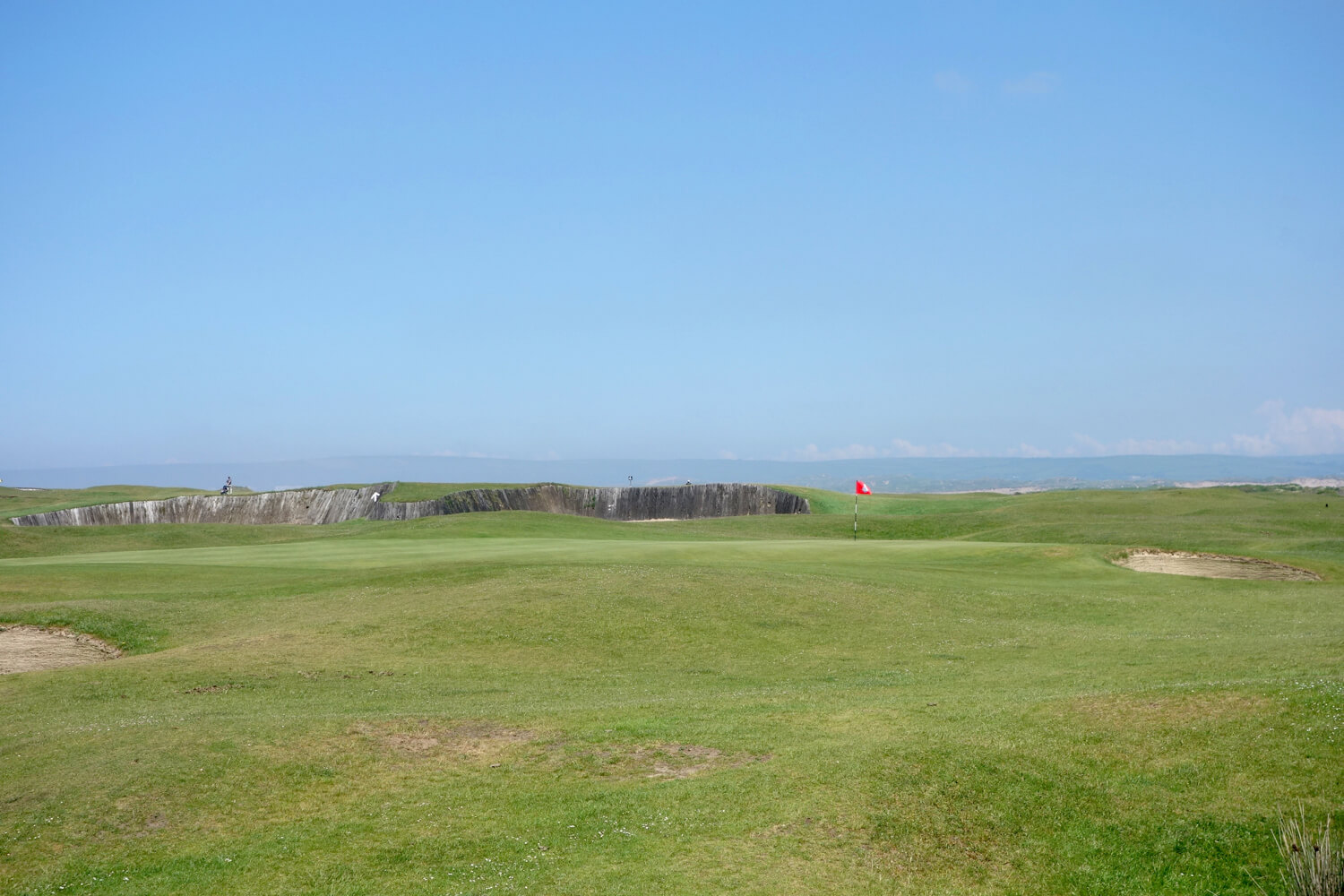
Hole #17 – 544 yards – “Road” – This isn’t a “Road” template, but is instead named for the road running in front of the green.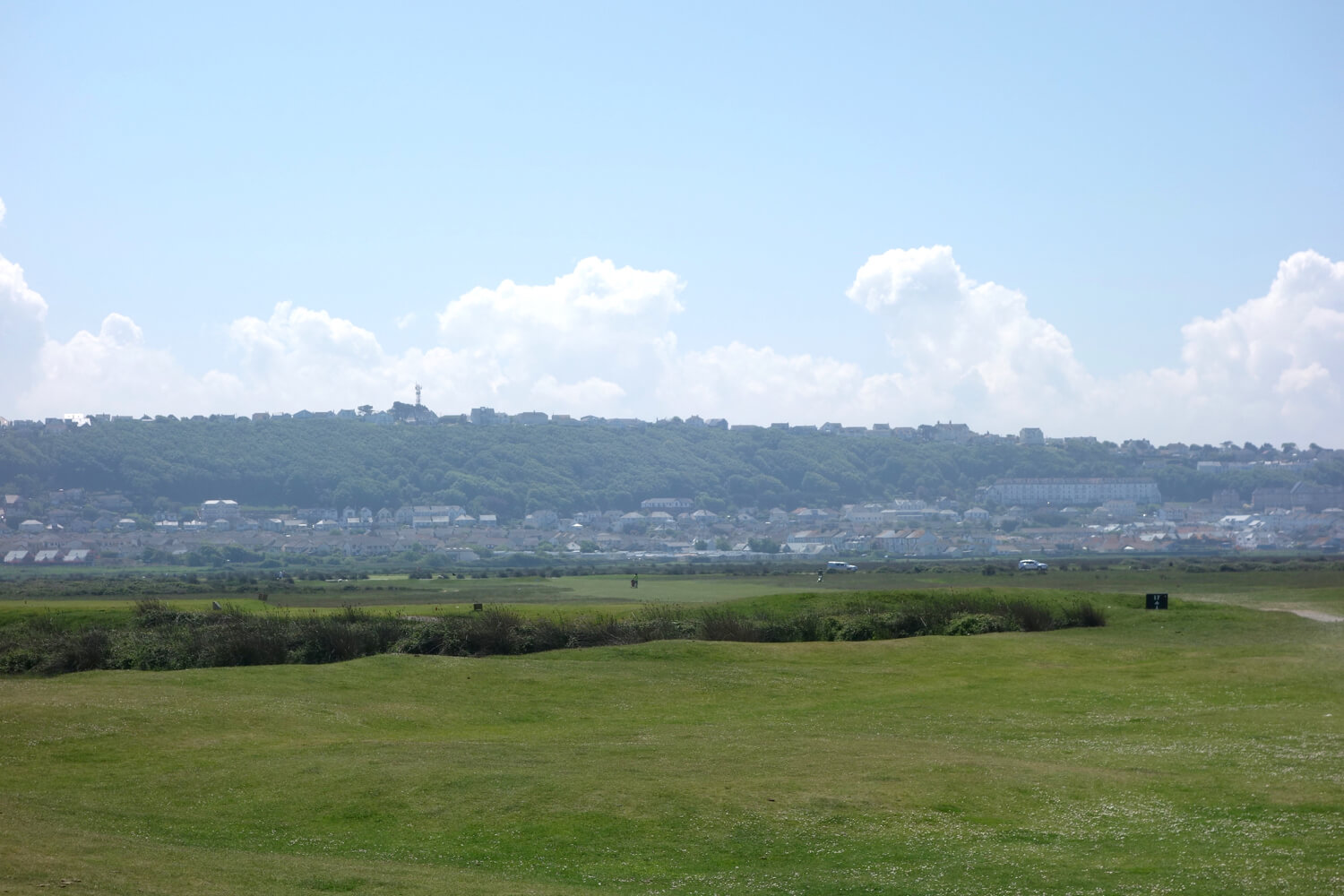
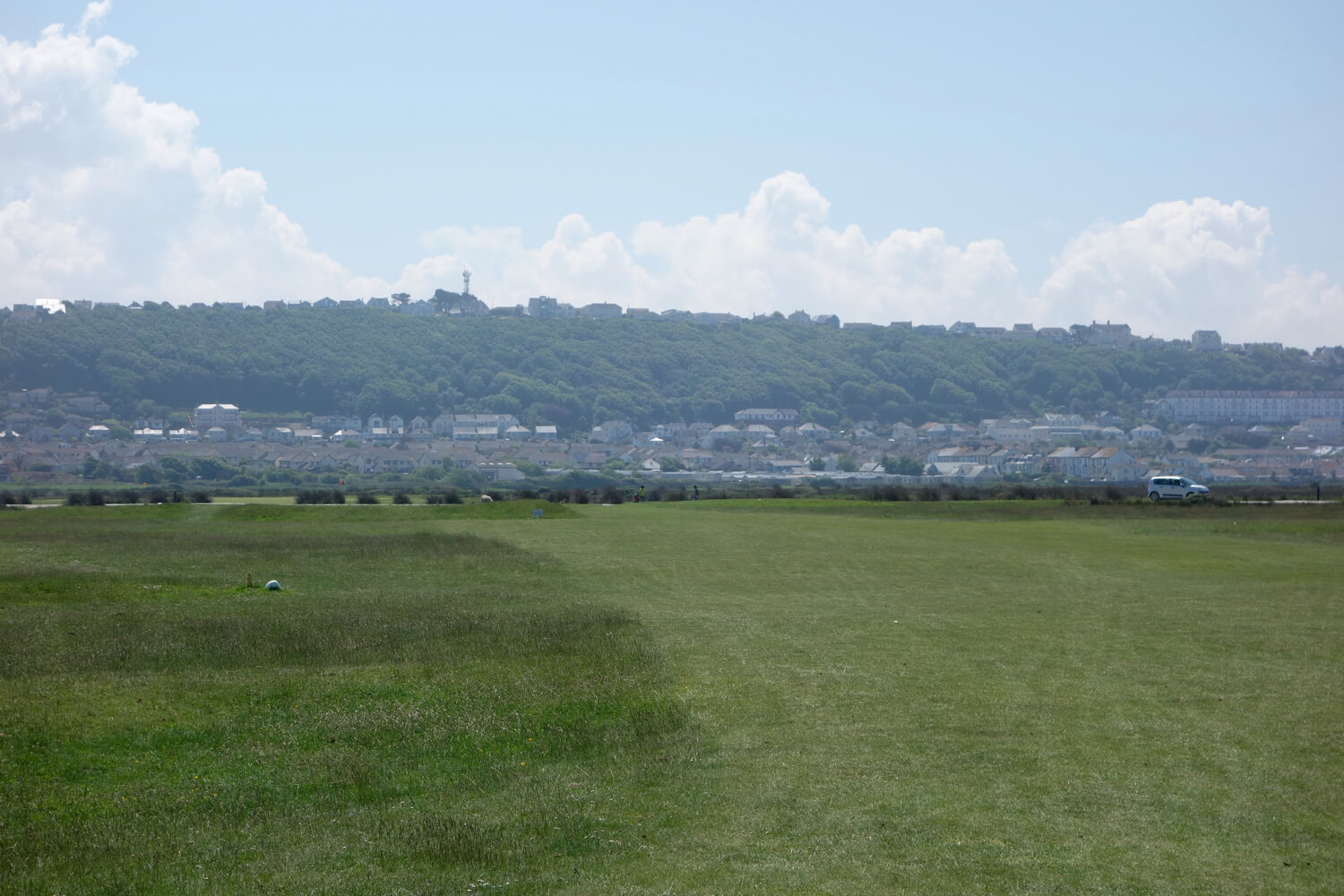
Hole #18 – 394 yards – “Home” – The final hole plays straightaway toward the tower in the distance, bending slightly right toward the clubhouse. The green is flat, but guarded by bunkers and there’s extra pressure knowing everyone in the clubhouse is likely watching.
I mean this as no slight to Royal North Devon, but the course isn’t the best I played in England, nor is the clubhouse the best-equipped, however in hindsight, I look back at the day as one of my favorites. The welcome was so warm and it felt so quintessentially British that it ticked all of my boxes. If we go back to the southwest of England I’ll definitely play the course again, and I bet my wife will want to walk it with me another time – and that’s the best confirmation of all.




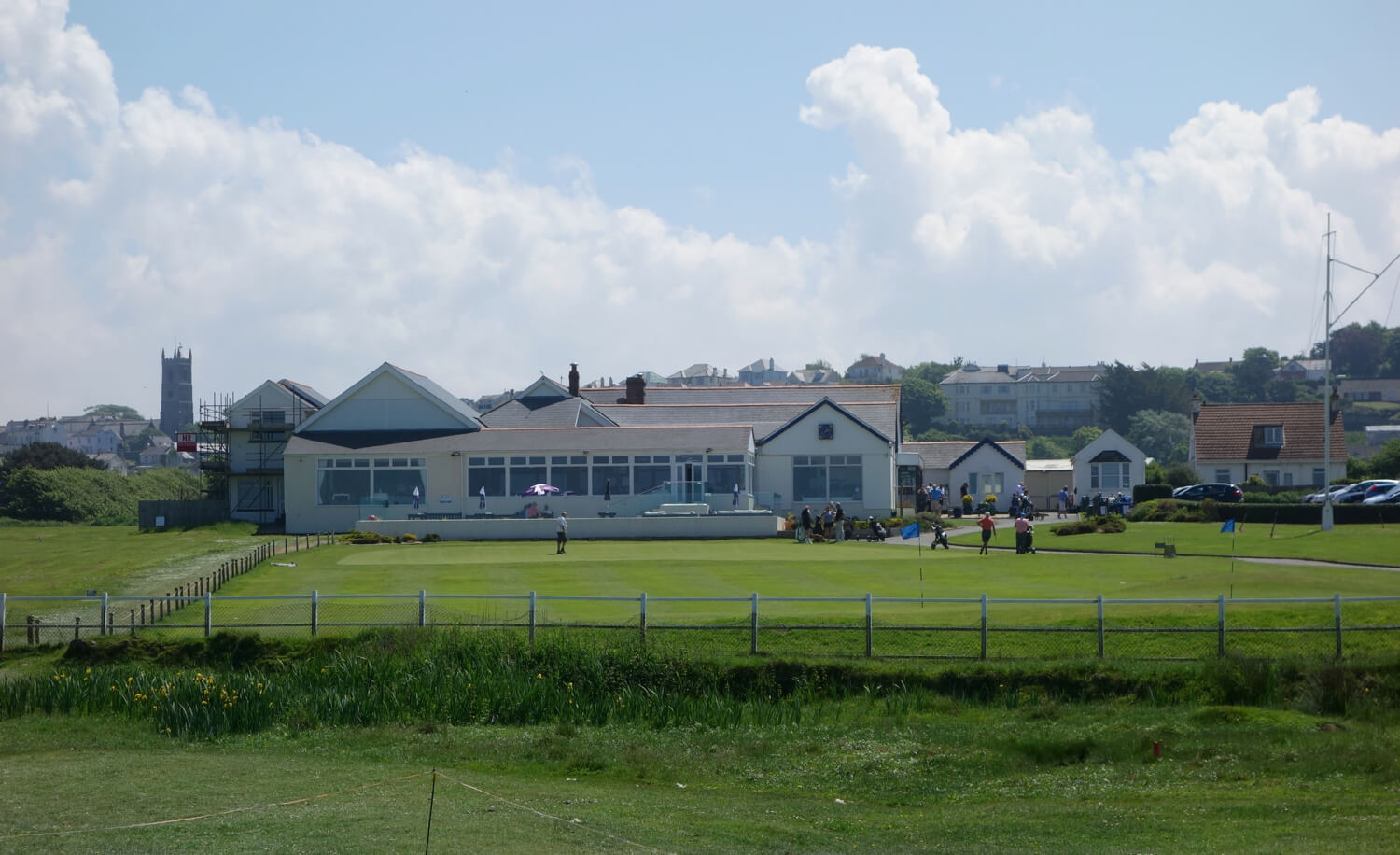

2 Comments on “Royal North Devon Golf Club (Westward Ho!) Review”
As someone born in Bideford who grew up playing this course on return visits every summer after our family moved away, your review is a pleasure to read and takes me back. I still remember bits of local knowledge passed down to me by my father, who was a member in the 1950s and managed to get his name on the wooden board for the Canny Ryall Cup in 1953 the year before I was born. The course you capture so well in all the photos is much as I remember it 50 years ago. The sea wall is a pebble ridge similar to the one in Carmel near the famous Pebble Beach Club here in California where I currently live. In the summer there often used to be (maybe still is) a Hocking’s ice cream van parked next to the 3rd tee where the beach road meets the pebble ridge. The scrubby areas are bullrushes which have very sharp spines and often make a stance or a swing unexpectedly painful even if you managed to find your ball in the sea of rushes. Your favorite short 5th hole is tricky because the tee is sheltered and it’s very easy to leave it short when the ball flies up into the prevailing south westerly wind. The 10th green (the hole that doglegs left around the rushes) is almost exactly flat – almost all putts are dead straight unless the wind is really strong. When approaching the 18th green across the burn, it’s useful to know if the tide is in (full burn) or out (soft mud) as you can bounce a short full shot off the water onto the far bank if the tide is in. The course was the scene of my rather doubtful greatest ever golfing feat in the Burrows Plate alternate shot foursome competition. I was about 16 and had been knocked out in the first round of the annual singles matchplay contest “The Schoolmasters” and was paired with very stout gentleman from the north of England in the consolation Burrows Plate competition. We meshed together very well keeping each other on the fairway and holed a few puts and managed to win every hole played despite our opponents best efforts closing them out 10/8 on the tenth green. The only time I have seen that happen.
Grayson,
Nice that you made time to visit RND on your trip & you will be rewarded should you ever make it back – it’s not a course eager to make a good first impression,nor does it reveal its secrets on a single play.
Expanding on David’s point about the pebble ridge: “Pot Walloping” is the verb given to the act of members throwing displaced pebbles back into the wall to replenish the sea defence follow a storm breach.